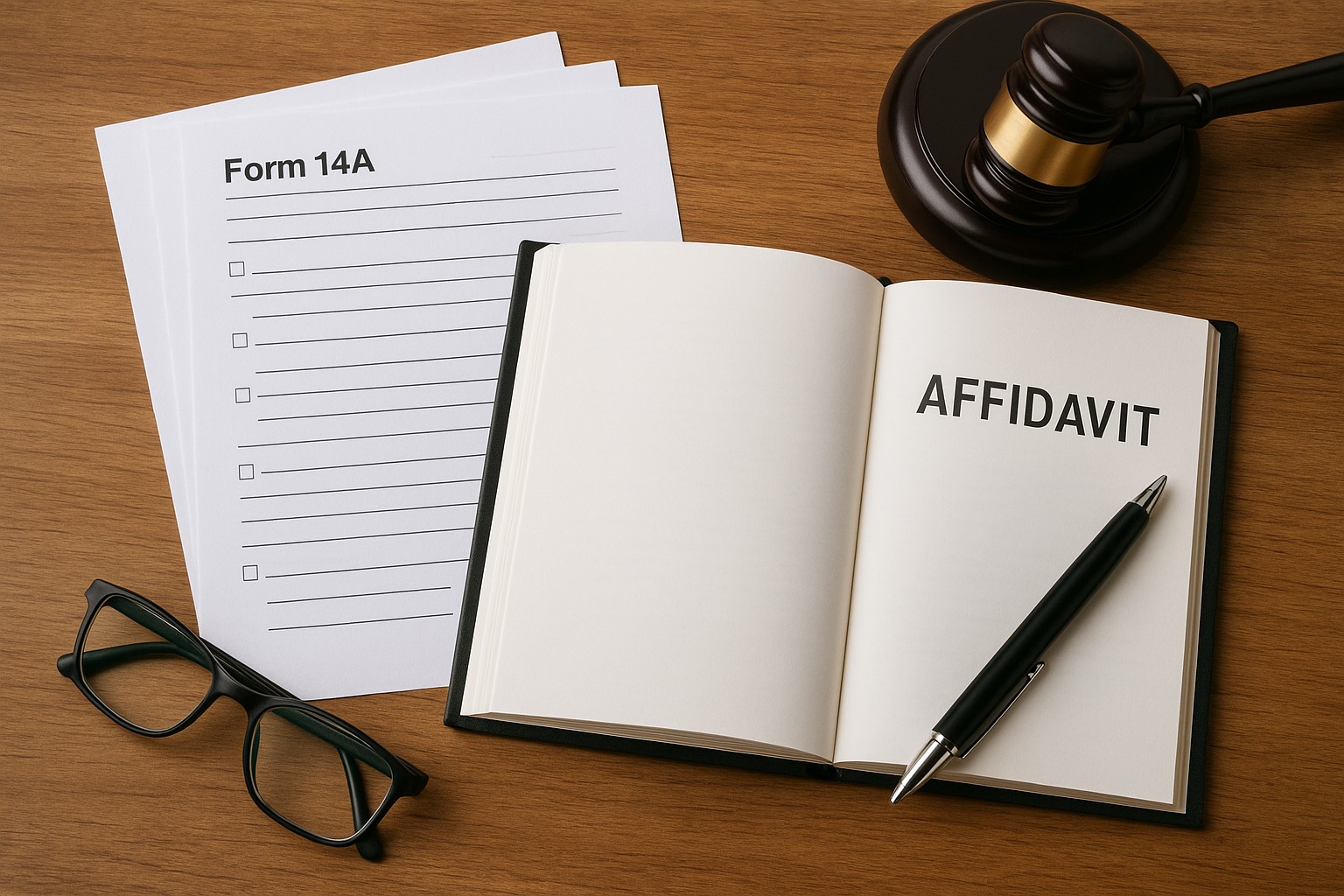How to Write a Powerful Affidavit: A Guide to Form 14A in Ontario Family Court
In Ontario Family Court, your **Form 14A: Affidavit** is your evidence. This sworn narrative is where you must present all the facts of your case to a judge. Our guide explains how to write a powerful and persuasive affidavit, detailing the "golden rule" of using facts, not opinions.

The Form 14A: Affidavit (General) is the single most important document for providing evidence in most family court motions. It is the sworn, written narrative where you present the judge with the critical facts of your case—the dates, the incidents, the police reports, and the medical evidence that support the orders you are requesting.
In family court, especially on motions for temporary orders, judges often make decisions based almost entirely on the competing affidavits filed by each party. There is usually no live testimony. Therefore, your affidavit is your evidence. Writing a clear, factual, and persuasive one is essential.
This guide explains how to structure and write an effective affidavit using Form 14A.
What is Form 14A: Affidavit (General)?
An affidavit is a written statement of facts that you swear or affirm is true before a person legally authorized to take oaths (a "commissioner of oaths," such as a lawyer or notary public). The person making the statement is called the "deponent." Form 14A is the standard template used for this purpose in most Ontario family law motions.
The Golden Rule of Affidavits: Facts, Not Opinions
Before you write a single word, understand this critical distinction:
- A FACT is something that happened. It can be proven.
- Example: "On August 1, 2025, the other party sent me 25 text messages between 10:00 PM and 11:00 PM."
- AN OPINION is your personal belief, conclusion, or interpretation.
- Example: "I think the other party is harassing me and trying to control me."
Your affidavit must contain facts only. A judge will draw their own conclusions based on the facts you provide. The more factual your affidavit, the more credible and persuasive it will be.
Writing Your Affidavit: A Step-by-Step Guide
Follow these steps to build a powerful and effective narrative.
1. Structure and Formatting
- Use numbered paragraphs. Each paragraph should contain a separate point or fact. This makes it easy for the judge to read and reference.
- Write in the first person. Use "I" to describe what you saw, heard, and did. (e.g., "I saw him take the car keys.")
- Tell the story chronologically. Start from the beginning and describe events in the order they happened. This creates a clear, logical narrative that is easy to follow.
2. Be Specific: Dates, Times, and Details
Vague statements are not helpful. Provide as much detail as you can for every important event.
- Weak: "He threatened me a few weeks ago."
- Strong: "On Sunday, July 20, 2025, at approximately 3:00 PM, in the kitchen of our home, the other party stood over me and said, 'If you try to leave, you'll regret it.'"
3. Use Exhibits to Prove Your Facts
This is where you incorporate the evidence you mentioned: police reports, medical records, and more. An "exhibit" is a separate document attached to your affidavit to support a fact you have stated. You must refer to each exhibit in the body of your affidavit.
- Step A: State the fact in a paragraph.
- Example: "The other party sent me a series of threatening text messages on the evening of August 2, 2025."
- Step B: Introduce the exhibit.
- Example: "A true copy of these text messages is attached as Exhibit 'A' to this affidavit."
- Step C: Label the actual document (the printout of the texts) with an "Exhibit A" tab.
You can do this for:
- Police reports ("A copy of the police report, file #12345, is attached as Exhibit 'B'.")
- Medical records ("A copy of my medical report from Dr. Smith dated August 3, 2025, is attached as Exhibit 'C'.")
- Photographs, emails, financial documents, report cards, etc.
4. Stick to What You Know Personally
Your evidence is strongest when it is based on your direct knowledge.
- Strong: "I heard the other party tell our child not to speak to me."
- Weaker (Hearsay): "Our child's teacher told me that the other party told the child not to speak to me."
If you must include hearsay, you must state who told you the information. The judge will give it less weight than your direct evidence.
The Final Step: Swearing and Signing Your Affidavit
Once your affidavit is complete and all exhibits are attached, you cannot simply sign it. You must take it to a commissioner of oaths.
- You will be asked to present your photo ID.
- The commissioner will ask you to swear an oath (on a Bible or other religious text) or make a solemn affirmation that the contents of the affidavit are true.
- You will then sign the document in front of the commissioner, who will also sign and stamp it.
By signing, you are declaring under penalty of law (including perjury) that your statements are true. This is a serious legal step.
Disclaimer: This guide provides general information and is not legal advice. Writing an effective affidavit is a skill that can significantly impact the outcome of your case. It is strongly recommended that you seek assistance from a family law lawyer.
